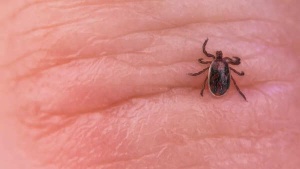Unexpectedly caught in a downpour? It's a universal annoyance to be stuck in wet clothes, especially without a change of outfit. Fortunately, some clever strategies can significantly accelerate the drying process, even while you're still wearing them.
No need for dryers or magical solutions—just practical methods to combat that uncomfortable, clingy feeling.
The initial reaction to soaked clothing is usually to squeeze out the excess water. That's a good first step. However, avoid aggressively twisting the fabric, which can stretch it out of shape. Instead, wring gently and then pat dry with an absorbent material.
If available, use paper towels, napkins, or tissues to stuff inside the fabric (particularly in areas like underarms, hems, or sleeves) and gently press. A hand towel or scarf works even better. The key is to absorb as much water as possible before moving on to the next stage. The drier the fabric starts, the faster it will air-dry.
It's not just about heat; airflow is crucial. Clothes dry quicker when in motion. Standing still in a humid environment will be ineffective.
Walk around, swing your arms, or stretch to encourage airflow between the wet fabric and your skin. If possible, position yourself near a fan or an AC vent. Outdoors, face the wind. The more air circulating through the fabric, the faster it dries.
Bonus tip: If you're indoors with a ceiling fan, stand directly underneath it and extend your arms to expose your sleeves and sides to the airflow. This will provide rapid improvement.
Although it may seem counterintuitive, layering wet clothes can be effective. If you have access to a jacket, hoodie, or shawl, put it on over the wet clothes. This will shield your wet skin from the wind and trap body heat, which accelerates evaporation.
Choose a loose-fitting outer layer. The objective is to create a warm, insulated space between the damp fabric and the outside air, similar to how a dryer functions. However, avoid wearing a plastic raincoat when you're already wet, as this will trap moisture and make you feel even more uncomfortable.
A hand dryer can be a lifesaver in a mall, office, or café bathroom. These machines can effectively dry soggy sleeves, dripping hems, and damp collars.
Instead of awkwardly trying to dry a whole arm at once, focus on the wettest areas individually. Hold the fabric a few inches away from the air vent and rotate it slowly. Pay special attention to sleeve cuffs, waistbands, and areas where water tends to pool. It's important to be discreet and avoid stripping down to dry everything at once.
If a hand dryer isn't available, a hair dryer can work just as well. Even the warm air from a heater or car vent can help if you position yourself correctly.
Your body acts like a portable heater, and you can use it to dry clothes more quickly. Constant movement, walking, light jogging, or even swaying while standing, will keep warm air circulating between your skin and the fabric.
Sitting still in wet clothes will only worsen the cold and slow down the drying process. Stay active instead. Even subtle movements can generate body heat that promotes evaporation.
If the situation allows, gentle stretching or a brief, brisk walk can be surprisingly effective. As your body warms up, the damp areas near your core and arms will begin to dry.
Being caught in the rain is inconvenient, but it doesn't have to ruin your day. By making a few minor adjustments, thinking quickly, and using your surroundings effectively, you can dry your clothes faster than you think.
Newer articles
Older articles
 iQoo Z9 Turbo: Rumored Specs Emerge – Snapdragon 8s Gen 3, 6000mAh Battery Highlighted
iQoo Z9 Turbo: Rumored Specs Emerge – Snapdragon 8s Gen 3, 6000mAh Battery Highlighted
 Tick Bite Paralyzes Fitness Influencer: A Wake-Up Call for Outdoor Enthusiasts
Tick Bite Paralyzes Fitness Influencer: A Wake-Up Call for Outdoor Enthusiasts
 UNESCO's World Heritage Wonders: Unveiling 10 Iconic Sites, From Petra to the Pyramids
UNESCO's World Heritage Wonders: Unveiling 10 Iconic Sites, From Petra to the Pyramids
 JPG to PDF: A Comprehensive Guide for Graphic Designers & Professionals
JPG to PDF: A Comprehensive Guide for Graphic Designers & Professionals
 5 Often-Missed Warning Signs of Bladder Cancer You Need to Know
5 Often-Missed Warning Signs of Bladder Cancer You Need to Know
 Shadman Islam Defends Bangladesh Batters After Day 1 Struggles Against Sri Lanka
Shadman Islam Defends Bangladesh Batters After Day 1 Struggles Against Sri Lanka
 Freestyle Chess Grand Slam Loses India Leg: Sponsorship Issues Sideline Magnus Carlsen
Freestyle Chess Grand Slam Loses India Leg: Sponsorship Issues Sideline Magnus Carlsen
 KL Rahul Puts Country First, Prioritizes England Tests Over Newborn Child
KL Rahul Puts Country First, Prioritizes England Tests Over Newborn Child
 7 Expert-Backed Strategies to Help Your Child Overcome Friendship Challenges
7 Expert-Backed Strategies to Help Your Child Overcome Friendship Challenges
 Samsung Galaxy A55 vs. Vivo V30 Pro: Flagship Features Clash in Mid-Range Android Battle
Samsung Galaxy A55 vs. Vivo V30 Pro: Flagship Features Clash in Mid-Range Android Battle